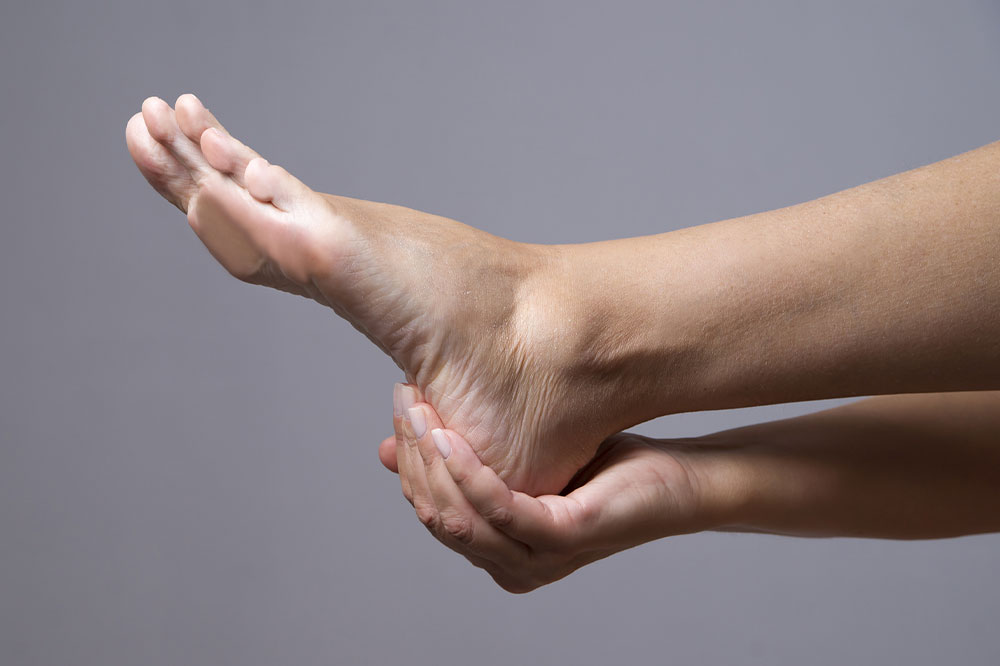
Heel spurs – Symptoms, causes, and more
A heel spur or bone spur is a bony development that pokes from the heel’s bottom, where the heel joins the ligament between the foot’s heel and the ball. They affect almost 15 percent of people. The condition develops over time, and many people do not know they have a problem until they visit a specialist for heel pain. Even though one can get rid of it through surgery, doctors advise non-surgical options to overcome symptoms.
Symptoms
Typically, heel spurs do not cause any symptoms. However, it can be associated with chronic or intermittent pain, especially while running, jogging, or walking, typically if the inflammation develops at the spur formation point. Generally, the cause for pain is not the heel spur itself but the soft tissue associated with it. Usually, people describe this pain as a pin or knife sticking into their feet’s bottom when they first stand up in the morning. This pain later changes to a dull ache. But the sharp knife pain usually returns after they stand up after sitting for a prolonged period.
Causes
Typically, heel spurs occur when long-term ligament strain and muscle wear out the soft tissue in the heel. A membrane tear that covers the heel bone may also be one of the causes. The heel can become vulnerable with age. As one grows older, the pads in the heel wear down and fail to offer shock absorption. Moreover, calcium deposits can form underneath the heel, forming bony protrusions or heel spurs.
Risk factors
Multiple things can amplify the risk of developing heel spurs. These include the following:
- Athletic activities: Jumping and running can wear down the heel and the foot’s arch.
- Activity on hard surfaces: Frequent jumping, walking, or running on hard surfaces may also wear down the heel.
- Trauma to the heel: Bruising the heel and tearing the membrane covering it can also lead to heel spurs.
- Age: Heel spurs are prevalent in older men and women.
- Gender: These are more prevalent in women than men.
- Improper footwear: Wearing footwear that has lost its support, does not fit well, or does not offer adequate support can also become a few causes of heel spurs.
- Underlying medical conditions: A few underlying conditions can amplify one’s risk of developing heel spurs. These include plantar fasciitis, diffuse idiopathic skeletal hyperostosis, ankylosing spondylitis, and reactive arthritis.
Treatment
Treatment for heel spurs involves lifestyle changes and rest. One must consult their doctor about the different treatment options for heel spurs. Some of the recommendations include the following:
- Cold compress: Ice packs for about 15 minutes in one go can help relieve heel spur pain by numbing the area temporarily. This method also helps reduce swelling.
- Anti-inflammatory management options: The doctor might recommend certain anti-inflammatory management options to reduce discomfort. These ease inflammation and pain across the foot’s arch and heel.
- Stretching movements and physical therapy: This is recommended to avoid long-term pain. One can do exercises that involve stretching the plantar fascia and heel muscles.
- Rest: It is one of the most advised treatment options. It helps relieve acute pain and prevent the condition from aggravating.
- Orthotic shoe inserts: Shoe inserts or heel pads offer the heel and arch support necessary to lower the pain. They also help avoid further wear and tear. One can use them in addition to the proper footwear for all-around protection.
The doctor may recommend other methods when the pain is ongoing and severe. They might suggest the removal of the heel spur to reduce pain and boost mobility in the foot. Heel spurs are often manageable with home remedies and changes in lifestyle. It is, however, essential to speak to a doctor before incorporating any lifestyle changes.




